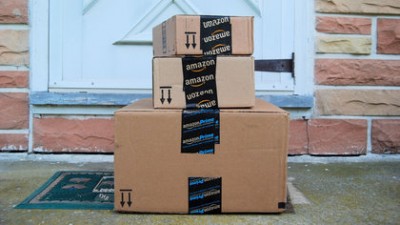 Photo of VivaLuxury courtesy of Bergdorf Goodman
Photo of VivaLuxury courtesy of Bergdorf Goodman
As retailers invest in digital sales channels, it is eating into their bricks-and-mortar sales and earnings, according to a new report from HRC Advisory.
Among luxury and department store chains, ecommerce sales have grown 178 percent since 2011, while in-store sales dropped 1 percent during the same period. With ecommerce growth stalling, brands will need to examine and redesign their omnichannel strategies to negate the impact on their financial results.
"Given that the list of existing and emerging online technologies is continually expanding and that many of these technologies do not have established track records, it is tough to know which ones will produce the best results," said Antony Karabus, CEO of HRC Advisory. "It is also tough to pick which analytics will assist in this ROI prioritization.
"Even though the rate of top line growth of ecommerce has slowed in the past few years, we expect it to continue to outpace brick-and-mortar growth, and therefore it is essential to continue to have a meaningful and differentiated presence online especially for luxury."
For its research, HRC Advisory looked at financial data for 11 department stores and luxury chains, 22 specialty apparel and beauty stores and 4 off-price retailers. Study lead Mr. Karabus also conducted interviews with 15 CEOs and CFOs to gain additional insights on the impact ecommerce is having on their businesses.
On the decline
HRC’s analysis found that there has been a 25 percent decline in operating earnings as a percentage of sales.
The advisory firm partly attributes this to the high cost of ecommerce operations and fulfillment. Online returns can be particularly costly, as merchandise that is sent back is often unable to be sold at full price, either due to timing or its condition.
In theory, adding an online presence would make it possible for brands to close stores, allowing them to save the expense of upkeep and real estate. However, online sales are not coming in at large enough volumes to enable retailers to retain profitability without these physical locations.
 Image courtesy of Printemps
While price matching as a service prevents lost sales, the purchases made under these agreements eat into a retailer’s margins.
Even though department stores and luxury chains saw a dip in sales per store of 2.5 percent over the last five years, in-store sales still account for 83.5 percent of sales. Additionally, for these players ecommerce sales only grew 17 percent in 2015, down from 39 percent in 2011.
Specialty retail, on the other hand saw a slight growth in bricks-and-mortar sales, which rose 3 percent over the last five years. This group also saw slowing ecommerce growth, as online purchases were up 9.5 percent in 2015 compared with 17.5 percent in 2011.
In ecommerce, brands also have to contend with a major competitor for the customer’s business: Amazon. The online retail giant is growing at twice the rate of the rest of the ecommerce industry, seeing 30 percent growth in the first quarter of 2016 alone.
While luxury brands may avoid selling on Amazon, the pure-play retailer’s services, including two-day shipping and easy return policies, have created an expectation for consumers. Other retailers have been forced to adopt similar policies, requiring investments.
Image courtesy of Printemps
While price matching as a service prevents lost sales, the purchases made under these agreements eat into a retailer’s margins.
Even though department stores and luxury chains saw a dip in sales per store of 2.5 percent over the last five years, in-store sales still account for 83.5 percent of sales. Additionally, for these players ecommerce sales only grew 17 percent in 2015, down from 39 percent in 2011.
Specialty retail, on the other hand saw a slight growth in bricks-and-mortar sales, which rose 3 percent over the last five years. This group also saw slowing ecommerce growth, as online purchases were up 9.5 percent in 2015 compared with 17.5 percent in 2011.
In ecommerce, brands also have to contend with a major competitor for the customer’s business: Amazon. The online retail giant is growing at twice the rate of the rest of the ecommerce industry, seeing 30 percent growth in the first quarter of 2016 alone.
While luxury brands may avoid selling on Amazon, the pure-play retailer’s services, including two-day shipping and easy return policies, have created an expectation for consumers. Other retailers have been forced to adopt similar policies, requiring investments.
 Amazon's delivery service is forcing retailers to adapt
Often the costs of these services, including expedited shipping and free returns, falls on the retailer. The consumer is winning, with more choices available to her, while the store is seeing little financial impact of its efforts.
To help with profitability, HRC suggests taking advantage of physical assets, something Amazon is lacking. Stores that are underperforming can contribute more by operating as a fulfillment site.
"Being online has become table stakes for any brand and it is not optional," Mr. Karabus said. "Any consumer considering an important or big ticket purchase is making an initial assessment and doing their initial research of their desired brands and the new fashions online before their purchase in a store or online."
Competitive advantage
Retailers need to look at free shipping as an investment, weighing the short-term expense against what can be recouped in the long run, according to a recent report by L2.
With players such as Amazon offering expedited, free shipping options, other retailers have been pushed to adopt similar services, but keeping up can be costly, as brands need to absorb the price of delivery. However, compared to a solely ecommerce business such as Amazon, retailers with a bricks-and-mortar presence are at an advantage when it comes to earning back the price of shipping through upselling and in-store conversions at the point of return (see story).
A unified commerce experience hosting a single cart across all channels is the future of retail, but retailers are struggling to deliver, according to a recent report by Boston Retail Partners.
Eighty-five percent of retailers list unified commerce as a top priority, meaning that soon customers will be able to shop, ship and pick-up products from wherever they wish. Getting there will involve improvements in point-of-sale hardware and software as well as increased support of mobile technology both for purchasing and recognition purposes (see story).
"The first and most critical decision is to understand your current and target customer and how they research and make their buying decisions," Mr. Karabus said. "Next is to determine and more effectively utilize the best analytics in order to obtain the information as to the relative performance of their online investments.
"The hardest thing facing retailers now is to make choices—but unfortunately at a time of declining earnings productivity, retailers must prioritize among online investments and make the hard calls as to where they will place their bets," he said. "As regards physical stores, the luxury chains are absolutely doing the right thing by targeting their capital into remodeling their top performers where the top line expansion opportunities still exist, whether Beverly Hills, Michigan Avenue, San Francisco’s Union Square and the like."
Amazon's delivery service is forcing retailers to adapt
Often the costs of these services, including expedited shipping and free returns, falls on the retailer. The consumer is winning, with more choices available to her, while the store is seeing little financial impact of its efforts.
To help with profitability, HRC suggests taking advantage of physical assets, something Amazon is lacking. Stores that are underperforming can contribute more by operating as a fulfillment site.
"Being online has become table stakes for any brand and it is not optional," Mr. Karabus said. "Any consumer considering an important or big ticket purchase is making an initial assessment and doing their initial research of their desired brands and the new fashions online before their purchase in a store or online."
Competitive advantage
Retailers need to look at free shipping as an investment, weighing the short-term expense against what can be recouped in the long run, according to a recent report by L2.
With players such as Amazon offering expedited, free shipping options, other retailers have been pushed to adopt similar services, but keeping up can be costly, as brands need to absorb the price of delivery. However, compared to a solely ecommerce business such as Amazon, retailers with a bricks-and-mortar presence are at an advantage when it comes to earning back the price of shipping through upselling and in-store conversions at the point of return (see story).
A unified commerce experience hosting a single cart across all channels is the future of retail, but retailers are struggling to deliver, according to a recent report by Boston Retail Partners.
Eighty-five percent of retailers list unified commerce as a top priority, meaning that soon customers will be able to shop, ship and pick-up products from wherever they wish. Getting there will involve improvements in point-of-sale hardware and software as well as increased support of mobile technology both for purchasing and recognition purposes (see story).
"The first and most critical decision is to understand your current and target customer and how they research and make their buying decisions," Mr. Karabus said. "Next is to determine and more effectively utilize the best analytics in order to obtain the information as to the relative performance of their online investments.
"The hardest thing facing retailers now is to make choices—but unfortunately at a time of declining earnings productivity, retailers must prioritize among online investments and make the hard calls as to where they will place their bets," he said. "As regards physical stores, the luxury chains are absolutely doing the right thing by targeting their capital into remodeling their top performers where the top line expansion opportunities still exist, whether Beverly Hills, Michigan Avenue, San Francisco’s Union Square and the like."
